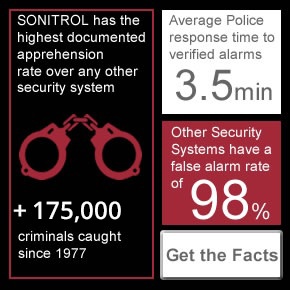 When it comes to business security, people often focus on external threats. Yet, it's crucial not to overlook the potential dangers posed by individuals within your organization.
When it comes to business security, people often focus on external threats. Yet, it's crucial not to overlook the potential dangers posed by individuals within your organization.
Insider threats, whether intentional or accidental, can be just as detrimental to a company's security and success. Incidents such as internal theft, vandalism, unauthorized access, and workplace violence can have severe consequences for businesses.
The good news is, by implementing a multi-layered approach to security and company culture, your business can effectively mitigate these risks.
With that in mind, let’s take a look at the strategies and solutions you can use to protect your business from insider threats.
#1. Establish a Strong Foundation of Trust
Building a culture of trust within your organization is the foundation for mitigating insider threats. When employees feel valued, respected, and supported, they are more likely to remain loyal and committed to the organization's goals and values.
Fostering an open and transparent environment is essential in cultivating trust. Encourage open communication channels where employees feel comfortable sharing their thoughts, concerns, and ideas. Actively listen to their feedback and demonstrate that their input is valued. This inclusivity creates a sense of belonging and promotes a collaborative atmosphere where employees are less likely to engage in malicious activities.
In addition to open communication, it is crucial to establish clear channels for reporting suspicious activities. Employees should feel empowered to report any concerns or observations they have without fear of retaliation.
#2. Implement a Robust Access Control System
Managed access control is a comprehensive security system that encompasses a range of mechanisms and protocols to regulate and monitor entry to physical spaces. Its primary objective is to enhance security and protect assets by ensuring that only authorized personnel can gain access to designated areas.
Using a combination of physical barriers, such as doors, turnstiles, or gates, along with electronic devices like keycards, PINs, or biometric scanners, these components work together to authenticate and validate the identity of individuals seeking entry.
One of the key advantages of managed access control is its ability to provide granular control over access privileges. Administrators can tailor access rights based on factors such as job roles, time of day, or the purpose of access. This flexibility ensures that only authorized personnel can enter specific areas and perform their assigned tasks.
Additionally, managed access control systems allow greater oversight by allowing you to monitor and track access events, capturing information such as successful and unsuccessful attempts, timestamps, and the identities of individuals involved.
Such data is invaluable for security investigations, compliance purposes, and identifying potential vulnerabilities in the system.
#3. Educate and Train Employees
Human error plays a significant role in insider threats, making comprehensive security awareness training for employees crucial.Employees should also be made aware of the potential consequences of their actions or negligence, emphasizing their role as vital components in maintaining overall security.
But remember. Employee training isn’t a one and done task. Regular reinforcement of security awareness training is essential to ensure that employees retain and apply the knowledge effectively.
#4. Monitor and Audit
To effectively mitigate insider threats, it is crucial to implement a comprehensive monitoring and auditing system that continuously tracks employees' activities in physical spaces. This entails monitoring physical access logs, security camera footage, and employee behaviors within the organization's premises.
Monitoring physical access logs allows for the identification of unauthorized attempts to access restricted areas, unusual patterns of access, or repeated access outside of designated working hours.
By leveraging access control systems and surveillance technologies, organizations can proactively detect and respond to any suspicious activities that may suggest an insider threat.
#5. Regular Security Assessments
Regular security assessments, encompassing both internal and external evaluations, are essential for identifying vulnerabilities within an organization's physical security systems. By conducting these assessments, organizations can proactively identify weak points that could potentially be exploited by insiders or external threats.
If you would like to learn more about protecting your business from inside (and outside) threats, contact us today for a free security audit.







